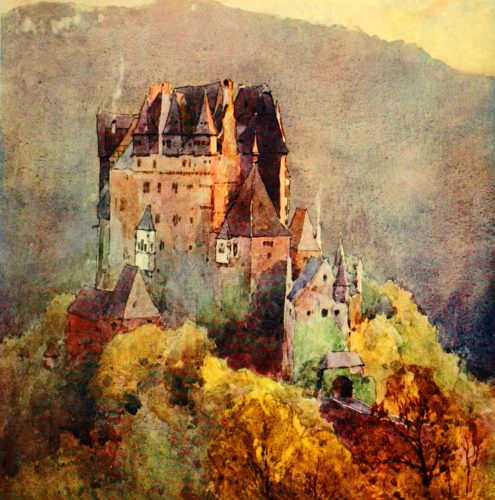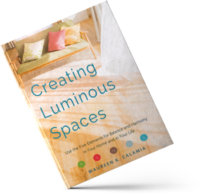 In feng shui we talk about how our homes are symbolic of what is going on in our lives. Our homes, so personal and intimate, are a mirror reflection of us. And because artwork is so full of symbolism and so ripe for interpretation, it can often provide vital clues for feng shui consultants to read and connect what is going on in our client’s lives. (Research shows that art has strong physiological impact on the brain).
In feng shui we talk about how our homes are symbolic of what is going on in our lives. Our homes, so personal and intimate, are a mirror reflection of us. And because artwork is so full of symbolism and so ripe for interpretation, it can often provide vital clues for feng shui consultants to read and connect what is going on in our client’s lives. (Research shows that art has strong physiological impact on the brain).
Below are a few things to consider when looking at the artwork around your home – be it paintings, photographs, sculpture, or any other type of art. (You may never look at art the same way again!)
Where is the art located?
Where the artwork is located in our homes is very important. If the artwork is in a prominent place it has a greater impact on our minds and emotions. Prominent places include by the entry, view from our favorite chair, view from bed, over headboard, behind and in front of our desk chair. These are places where we spend a lot of time and either are looking at it all day, or are being “supported” (or not!) by it all day and night.
If we have a blank wall it may represent indecision (what to hang there), lack of care or attention to yourself, or could actually be your desire to be open and breath.
–> Take inventory around your home. What is going on in those prominent places?
Does it evoke Positive Energy?
Since artwork is very subjective and personal, as a feng shui consultant I always make a point to ask the client about any artwork in a prominent position. I simply ask “Can you tell me about this painting?”
For example, the painting above can have so many different emotions associated with it. One might say that they see the castle as a safe haven, a special sanctuary away from it all. Another might say that it feels lonely. Yet another might talk about the grand view and opulence!
Obviously, it’s best to have artwork that evokes a positive feeling in you. It might be the subject matter (say, you love sailboats), or where/when you purchased it (on a wonderful trip to Venice), who gave it to you (a beloved aunt), or it might be just the energy and color of a painting (which is typically what attracts me).
Art that has any negative connotation can wreck havoc on our subconscious. For instance, a client had a painting in his entryway of Soviet industrial scene that was dark and forbidding. It seemed the perfect metaphor for the “drudgery” of what he was experiencing in his life.
A couple had a lovely painting over their headboard, but when asked, it was found to be a gift from his ex-wife, which opened up a torrent of emotion from the current wife. Another client had original oils all over her house and the subject matter felt oppressive to me. However, when asked, I found that these were her father’s paintings and they brought her close to him even after his passing.
You truly never know. Each piece of art has a story.
–> What are the stories surrounding you? What do they say about how you feel? Your life experiences?
Two common feng shui pitfalls with art
To Fill a Space
Sometimes we purchase artwork to fill a blank wall. We go out and get something that we think is the right size and will “do the trick.” But does it really ever, if we don’t love the piece?
It’s the Right Color or Theme
We might go about looking for artwork that is driven solely by color or theme of the room. We might be looking for just the right accent colors to perk up a room or finish a newly-designed space. That’s fine, as long as you really love it. But this process takes time. I find more often than not, people don’t take that time and impulsively have a quick shopping trip to HomeGoods and settle on something that’s just okay.
For instance, one client had a scene of a village behind her desk. I asked about it and learned that her interior designer picked it out for its color. Did she like it? It’s okay, she said, and was very open to changing it. I explained the importance of support behind her in her work and suggested that she go out and get something that she really loves. She then reported how she loved having these large, magnificent trees supporting and nurturing her in her work.
Since artwork has such a strong influence on our mood, emotions and behavior, our artwork should inspire us and make us feel good. We can use art to propel us to the future; our dreams and goals. If we want to plan a future trip to Japan, perhaps a view of Mount Fuji is in order. If we want to secure a healthy romantic relationship, perhaps a photograph of lovers on the banks of the Seine.
–> Do you have any pieces that were purchased for these reasons? If so, consider how you feel about them and perhaps start looking out for something new and exciting that will feed your vision and your goals.
The Feng Shui art of hanging art
We have all seen homes where the art looks great — not just the art itself but how it is placed on the walls. In most homes I visit the artwork is usually hung way too high on the wall or there is no symmetry in groupings, so it looks “off.” One basic tip is to locate the center of the piece and place it around 5’4″ high from the floor — roughly eye level when standing. Here are some a few more simple tricks to get it right.
Interested in looking at your artwork and reflecting on its stories? Send me a photo or two and, with your permission, I’ll share on Facebook! Have a question, comment on this post. I will respond!



Reader Interactions